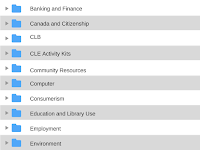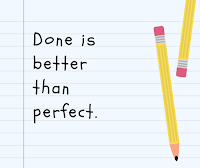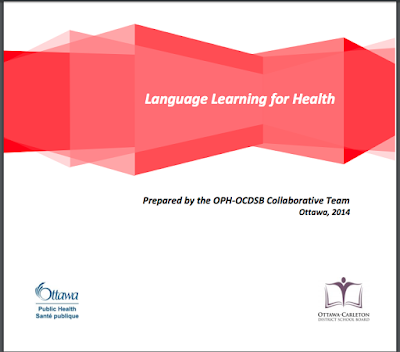Below are ten ways that I attempt to arrive at the end of the work day or week feeling there is still some energy and time left for me, for my hobbies, for exercise, for family. These are things you may or may not already have thought of or made part of your life. Some of these tips relate to physical well-being, others to mental, spiritual, and emotional wellbeing. I hope you come away with at least one new idea to try in the new year and will take the time to use the comments section to share with us how you feel about this topic.
(1) Reduce the cognitive load. Or rather, be mindful of where you and your students may be spending cognitive resources that you could free up via routines and wiser organization. Work smarter, not more.
- Keep lists. We only have so much working memory. To feel less stressed throughout the day, I find it helpful to keep a written list of things I have to do. At school I maintain a tiny corner of the whiteboard for the things I need to remember, such as printing out my time sheet for my site supervisor or calling my dentist.

- Keep well-organized files, both soft and hard. My day is easier and less stressful because I know exactly where everything is. If I need a resource on the topic of citizenship to use with a CLB 3/4 class, I know it's on my flash drive under Canada - Citizenship, which is in alphabetical order along with Canada - Geography, Canada - Government, and Canada - History. In case you're not already annoyed at my having my ducks lined up in a way that would make Martha Stewart proud, I'll add that establishing a logical file naming convention is another thing I'm very glad I thought of at the beginning of my teaching career. For example, files to do with the ESL Literacy reader "Food from Home" are named Food from Home crossword, Food from Home word shapes, Food from Home activity pack, etc. This way they all end up together on the storage drive.
- Use routines. Routines free up cognitive real estate for the content of the lesson, and this applies to both student and instructor. When students know what to expect, they can help you more easily. My students know that as soon as they enter the classroom after an absence, it's their job to check "the box" for the worksheets they missed. With routines like this one, the class can practically run itself, which means less stress for me than I would experience in a class where students were continually asking for direction.
 (2) Get your sleep. I am absolutely amazed at how much better I feel after going to bed early and getting those proverbial eight hours. I smile more. I let go of little annoyances more easily. I remember to breathe.
(2) Get your sleep. I am absolutely amazed at how much better I feel after going to bed early and getting those proverbial eight hours. I smile more. I let go of little annoyances more easily. I remember to breathe.
(3) Nourish yourself. Stay hydrated and bring healthy meals and snacks every day. This has been a hard one for me, especially hydration. I've found ways to incentivize these new behaviours until they becomes habit:
- Buy or upcycle a pretty water bottle; maybe even infuse some cucumber, lime, lemon or mint leaves in it. Most of my morning students nurse a little jam jar of green tea with goji berries all day long. They set a great example for me.
- Buy or make an attractive lunch bag. I had to go online to find one I liked. I make up the first two or three lunches on the weekend and later mix in some leftovers or a Luvo organic frozen dinner for days when I've run out of homemade meals. If you think you don't have time to make healthy meals, let me tell you about grain bowls. I cook up a batch of brown rice or quinoa in my little rice cooker, then open and rinse a can of garbanzo beans, lentils, or other legume. These form the base of my grain bowl. From there I add in something crunchy, such as sunflower seeds, something green, such as seaweed or barely wilted baby spinach leaves. You might like to toss in a soft-boiled egg. Finally, add a dressing of your choice. I just mix up a tiny bit of sesame oil and vinegar. I divide this up into three lunch containers and...Bob's your uncle!
(5) Take a load off.
- Follow Martine's Rule Number One. This one ties into 'routines' above. Remember to delegate to students everything that can be handed off to them. If you didn't have time to make that wonderful graphic organizer, project an exemplar and pass out notebook paper. I did this recently when we needed a Venn Diagram graphic organizer. One student grabbed the tea tin off the hospitality station and started passing it around, as it was the perfect size for our two circles. Literacy students can make flashcards.
- Strategically place quiet work. I was listening to a podcast from Jennifer Gonzalez / Cult of Pedagogy the other day on the topic of what she calls Grecian Urns. You have to listen to the podcast to find out how she arrived at the term. That's her name for an activity that takes up a lot of time and might be fun, but has no real educational value. She warns us away from them, of course. That being said, even she admits there can be times when you consciously choose to give students an activity that will get them out of your hair because, hey, you can't be ON all the time. This is the point where I admit to you that I embed a quiet activity in the lesson most days at 2:40. That's when my literacy learners and I are worn out. We've been working hard on listening, reading, writing and speaking. They need a break, and I need time to clean up the hospitality station. So that's the point in the day when I give them a puzzle. Yes, the puzzles have SOME value. But honestly? I need twenty minutes of quiet.
 (6) Wear sensible shoes and comfortable clothes. I know this is a hard one for my colleagues who like to wear high heels, but in the end you are going to have to decide which you value more: how you look or how your feet and back feel after hours of standing, walking, and stair-climbing. I find that I enjoy going to work more when I can spend my day dressed in clothes made from natural fibres that breathe and that are tailored to allow for easy movement. I am a big fan of Lagenlook. As for shoes, I've tried many brands and have found I can rely on Joseph Siebel and Blundstone for their comfort, support, and longevity.
(6) Wear sensible shoes and comfortable clothes. I know this is a hard one for my colleagues who like to wear high heels, but in the end you are going to have to decide which you value more: how you look or how your feet and back feel after hours of standing, walking, and stair-climbing. I find that I enjoy going to work more when I can spend my day dressed in clothes made from natural fibres that breathe and that are tailored to allow for easy movement. I am a big fan of Lagenlook. As for shoes, I've tried many brands and have found I can rely on Joseph Siebel and Blundstone for their comfort, support, and longevity.(7) Be authentic. It takes a lot less energy to be yourself than it does to wear a mask all day long.
(8) Work smarter, not longer. Weave in some Back-to-the-Well. Cut your marking time in half. Go materials-light at least some of the time (see also Dogme in ELT). By following recommendations for the teaching of vocabulary or lexical chunks as outlined by Gianfranco Conti on his blog and in this week's blog post about a shift from focused to thorough processing, I believe you will end up making life easier on yourself while becoming a more effective language instructor.
(9) Advocate for yourself and for your team. The number of signatures on this petition says to me that settlement English teachers in Canada are facing a crisis in their agencies and classrooms. If you are happy with Portfolio Based Language Assessment as it is being implemented at your workplace, then scroll on; number nine is not for you. If you are unhappy with what is happening, find a way to connect with others in your field. At the very least, get your head out of Canada and join a group such as the Facebook group Global Innovative Language Teachers, where trends and fads such as this one can be put into a wider context.
(10) Protect your capacity for joy. If doing your job well and having a life outside of teaching have become mutually exclusive, it is time to re-evaluate. Life is too short to live it in such a way that you turn down play dates with children, don't ever walk in the woods, never find time for a day trip, no longer have time for hobbies. Decide now, before the new year begins, where you're going to draw the line. What will be your signal to yourself that enough is enough?
 When my lesson planning is corralled and self-care managed to the extent that I have time and energy for an evening class one or two nights a week, date nights with my partner, and blocks of unstructured down time throughout the week, I know I am achieving work-life balance. If not, that's when I know it's time to step back and see what's going awry.
When my lesson planning is corralled and self-care managed to the extent that I have time and energy for an evening class one or two nights a week, date nights with my partner, and blocks of unstructured down time throughout the week, I know I am achieving work-life balance. If not, that's when I know it's time to step back and see what's going awry.How about you? Are you making resolutions to do with self-care in the new year? Do you have self-care strategies to share with me and with our peers in this field? We would love to hear.


































